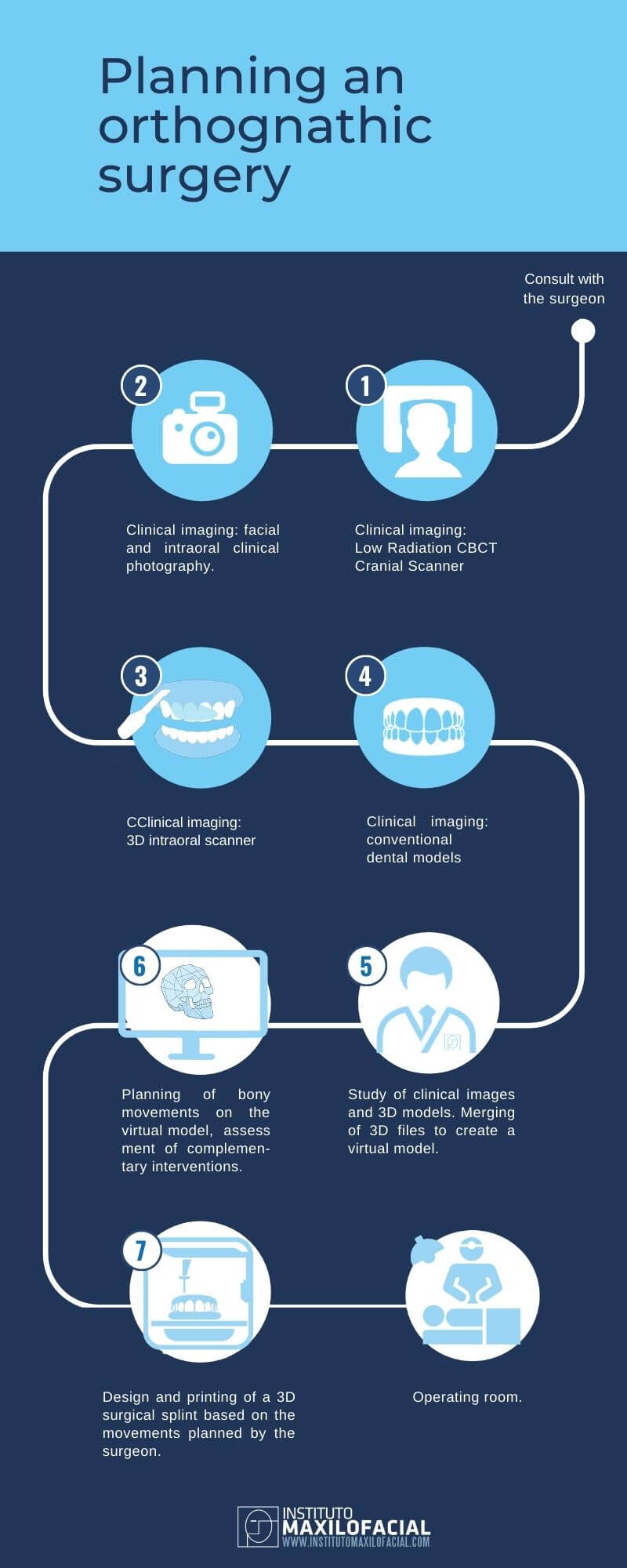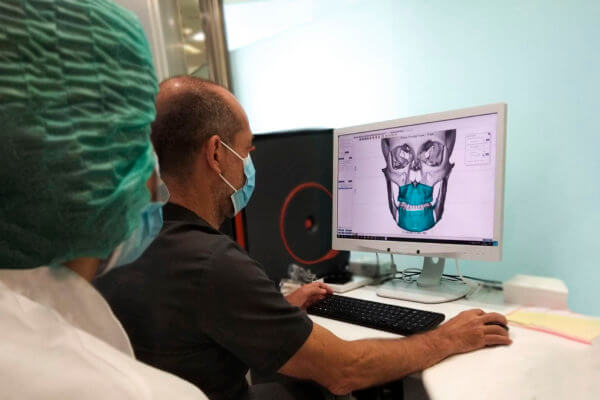The Maxillofacial Institute was the first European center to introduce three-dimensional planning of surgeries. Through the introduction of the intraoral surface scanner, the CBCT or low radiation cone beam scanner and the latest generation 3D software, we carry out the analysis of each case, completely in situ, and with millimeter precision.
Thus, the planning process for orthognathic surgery at the Maxillofacial Institute is made up of several steps:
1- Taking of image records:
- Low radiation CBCT cranial scanner
- A series of facial and intraoral clinical photographs
- Intraoral scanner
- Conventional dental molds
2- Next, the 3D files are merged in our specialized software, thus creating a three-dimensional virtual model of the patient.
3- Then, the maxillofacial surgeon analyzes all the clinical images and plans the bone movements in our 3D platform, being able to anticipate with virtually millimeter precision all the surgical movements that will be performed later on, in the operating room. In this step, he also evaluates complementary interventions to achieve better facial harmony, as our surgeons consider functionality and aesthetics as a whole.
See: How to know where to place the bones to achieve a better harmony with the patient's features?
4- From this three-dimensional planning, we design a personalized surgical splint that we then print on our 3D printer. This splint will guide the new occlusion during surgery.
Thanks to this process, our surgeons can anticipate, plan and simulate a virtual surgery before real surgery in the operating room, and even previously share the virtual results with the patient to increase their safety and satisfaction with the results and to speed up surgical time, resulting in less trauma to the patient, less inflammation, and a faster recovery.
Related content:
3D planning in orthognathic surgery
What advantages does minimally invasive surgery offer you?









